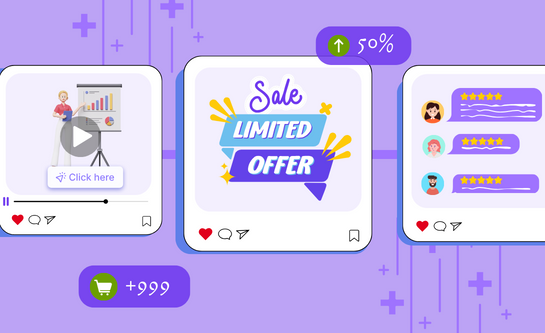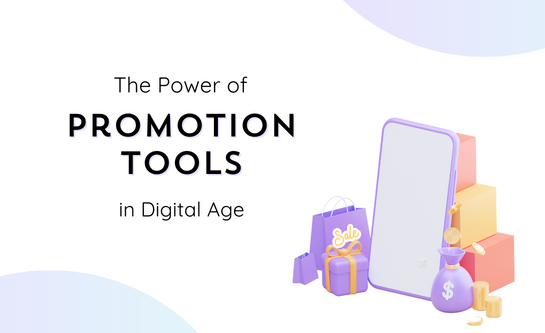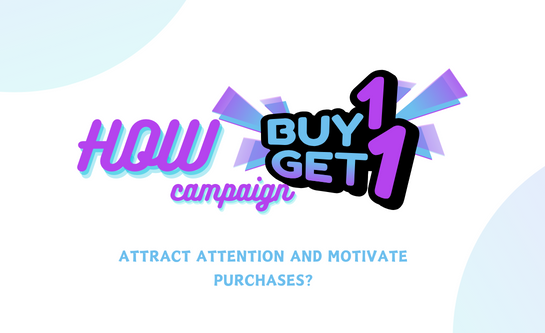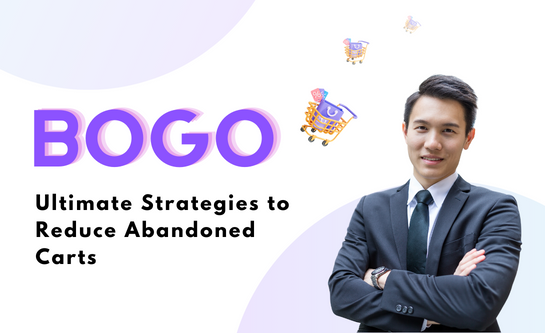Promotion Strategies: E-commerce Tips To Boost Buying Intention
 May 08th, 2024
May 08th, 2024
 506 views
4 MINS READ
506 views
4 MINS READ
In the e-commerce industry, where consumers are inundated with choices, promotion strategies play a pivotal role in influencing purchase decisions. From providing comprehensive product information to leveraging customer reviews and limited-time offers, businesses employ numerous tactics to entice buyers and secure sales. In this article, we dive into the various promotion strategies that effectively drive purchase decisions for the e-commerce industry.
Empowering Consumers with Knowledge

In the digital age, consumers are more informed than ever before. They seek detailed product information to make well-informed purchasing decisions. Therefore, e-commerce businesses should provide comprehensive product information that satisfies this consumer demand and builds trust in the brand.
1. Product Descriptions
Clear, concise, and informative product descriptions are essential in guiding consumers through their purchase journey. Especially, in the e-commerce landscape, which involves low interaction between sellers and buyers, developing detailed product descriptions will increase the conversion probabilities. For instance, providing detailed specifications, features, and benefits will enable consumers to understand the value proposition of the product.
2. High-quality imagery and Videos
Visual content such as images and videos offer a tangible representation of the product, enhancing the consumer’s perception of its quality and functionality. Along with text-based information, visual form of product information is the main method to attract and convince online consumers. High-resolution images and interactive videos deliver an aesthetic virtual experience so that e-commerce consumers can receive the in-store shopping experience online and increase satisfaction.
3. User Manuals and Guides
Offering user manuals and guides demonstrates a commitment to customer satisfaction. These resources help consumers understand product usage, troubleshoot issues, and maximize the product’s potential, fostering a positive post-purchase experience and driving repeat purchases. Additionally, providing manuals and guides online ensures the standard of service quality and reduces negative feedback.
Harnessing the Power of Customer Reviews
Customer reviews create significant influence over purchase decisions. They serve as social proof, validating the credibility and performance of a product or service. In today’s online shopping, the behavior of tracking product’ reviews is a new buying habit of online consumers. Positive reviews can instill confidence in prospective buyers, while negative reviews offer valuable insights for improvement.
1. Authenticity and Transparency
Authenticity is a core value in customer reviews. Genuine feedback from real users resonates with consumers, as they trust the opinions of their peers. Transparency in displaying both positive and negative reviews fosters credibility and authenticity.
2. Response to Feedback
Engaging with customer feedback demonstrates a commitment to customer satisfaction. Responding to reviews, addressing concerns, and implementing suggestions showcase a proactive approach towards improving the product and customer experience.
3. Leveraging Influencer Endorsements
Collaborating with influencers or brand ambassadors can amplify the reach and impact of customer reviews. Influencers lend credibility and authority to the product through their endorsements, influencing the purchasing decisions of their followers.
Limited-Time Offers: Creating a Sense of Urgency
Limited-time offers evoke a sense of urgency, compelling consumers to act immediately to capture the opportunity. Whether it is discounts, promotions, or exclusive deals, time-bound offers stimulate immediate purchase decisions.
1. Flash Sales and Discounts
Flash sales, where products are offered at discounted prices for a limited duration, create a sense of urgency, driving impulse purchases. Time-sensitive discounts incentivize consumers to make immediate buying decisions to avail themselves of the savings.
2. Seasonal Promotions
Seasonal promotions capitalize on specific occasions or holidays, leveraging the heightened consumer spending during these periods. Offering exclusive deals or bundles during festive seasons or special events entices consumers to make purchase decisions driven by the fear of missing out (FOMO).
3. Limited Stock Alerts
Notifying consumers about limited stock availability triggers a fear of scarcity, prompting them to make immediate purchases to avoid missing out on the product. E-commerce platforms involve many small businesses, which have lower capital and stock numbers compared to traditional retail. This means that many e-commerce brands have low stock levels, so consumers are likely to encounter stock-out situations. Therefore, the use of limited stock alerts in the e-commerce industry has more impact than the traditional retail industry where they commonly know the stock-out problems. Limited stock alerts coupled with time-bound offers create a powerful incentive for consumers to act swiftly.
Conclusion
In conclusion, promotion strategies such as providing comprehensive product information, leveraging customer reviews, and offering limited-time offers play a pivotal role in influencing purchase decisions. By empowering consumers with knowledge, building trust, and creating a sense of urgency through time-bound offers, businesses can effectively drive sales and enhance customer satisfaction. In an increasingly competitive marketplace, mastering these promotion strategies is essential for businesses seeking to thrive and succeed.
 Back to blog page
Back to blog page


































